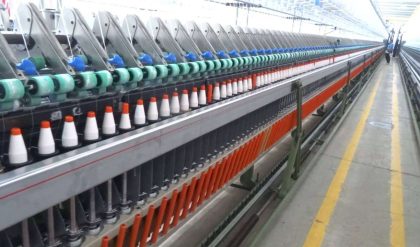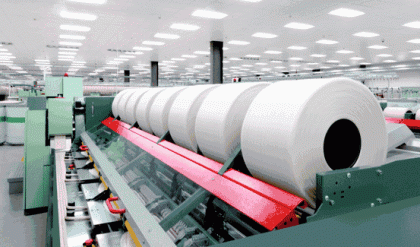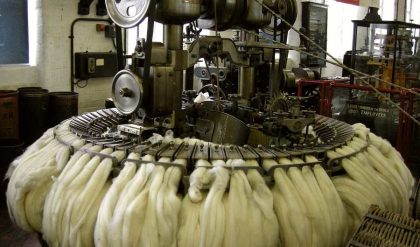If we want to know anything, firstly we should to know about the history. If we know the history then attraction on those things will increase. In this review we will discuss the history of the yarn spinning and Classification of spinning techniques. Why conventional spinning has converted into modern or advance spinning? In conventional spinning process, production would be very less, higher wastage, unhealthy, environmental inappropriate and overall cost would be high. So, for the demand of time, conventional spinning replaced with modern spinning. We will describe step by step.
An historical account is given of the development of the yarn spinning process, from its initial beginnings as a hand craft, to the mechanisation of the process during the Industrial Revolution, and through into the twentieth century when a wide range of different spinning techniques was developed.
During the 1970s, there appeared to be a myriad of spinning systems, such as twistless spinning, self-twist spinning, fasciated yarns, composite yarns, wrap-spun yarns, pot spinning, continuously felted yarns; and the many possible variants in open-end spinning such as rotor, electrostatic, friction spinning, and vortex spinning (the original “Polish” system). At the same time, there were continued developments in ring spinning, with ventures into rotating ring and traveler systems, individual spindle drives, high draft systems, modified travelers, double roving spinning, and hybrid systems.
The term ‘spinning’ may be defined as the twisting together of fibres to form yarn (or thread, rope, or cable) or Convert natural or man-made fibers (mmf) and filaments into yarns by twisting or other means of binding together the fibers or filaments. This provides a relatively fine continuous length of thread that has properties Suitable for conversion into a fabric form or for use directly for sewing or rope making.
The object of spinning and of the process that precede it is to transform the single fibres into a cohesive and workable continuous length yarn. Basically, in the case of natural fibres, the processing involves opening, blending, carding, combing, drawing and roving to produce the material for the spinning frame. This is followed by the spinning itself.
The spinning processes employed to make fibres or filaments may be generally classed as polymer extrusion methods. Typical extrusion processes are melt-spinning, wet-spinning and dry-spinning; there are also variants of these.
Before presenting an overview of the various staple-fibre spinning processes, it is useful to give a short explanation of the concept ‘staple fibres’. It was explained earlier that an extruded tow of filaments can be cut or broken into discrete lengths to produce staple fibres. Staple-fibre spinning systems, however, were originally developed for converting natural fibres into spun yarns and therefore tows are generally cut to give similar length characteristics, particularly when a yarn blend of natural and mmf is to be spun.
Hand Spinning:
Historically, staple-fibre spinning is an ancient craft. Although the precise date of its origin has yet to be known, there is archaeological evidence of ‘string skirts’dating back around 20,000 years ago, to Paleolithic times. The early skill of spinning a thread from staple fibres, however, is believed to have been in existence at least some 8000 to 10,000 years ago. The weaving of yarns can be dated back to Neolithic times, around 6000 bc, and both skills are said to predate pottery, which can be traced to around 5000 bc. It is likely that one of the earliest fibres to be spun was wool, since sheep existed about 1 million years ago during the early Pleistocene period. The domestication of sheep can be traced back to 9000 bc. in northern Iraq at Zam Chem Shanidar.
The Spinning Wheel:
Although a precise date has yet to be determined, it is believed that it was within the geographical region of either India, China or Persia (now Iran) linked to the Eastern wool, cotton and silk trade, during the period 500–1000 ad, that the spinning wheel was invented. With this system the spindle is switched from vertical rotation and secured to rotate in the horizontal position. The whorl is replaced by a pulley wheel, which effectively is a thick whorl with a groove cut into its peripheral surface.
Hargreaves’ Spinning Jenny:
The use of the spinning wheel for the two-stage yarn production process spread throughout Europe and was the method widely employed for producing cotton yarns and yarns from short wools up until 1764, when the demand for increased yarn production led to the invention of the ‘spinning jenny’ by James Hargreaves, a British weaver from the town of Blackburn in northern England. It is interesting that it was a weaver who effectively moved the spinning process towards an industrial scale. At the time, the growing demand for spun yarns was a result of another weaver’s invention – John Kay’s ‘flying shuttle’. This greatly increased the rate of woven cloth production on the handloom.
The Saxon Wheel:
The spinning of long fibers, including flax and hemp, was somewhat more cumbersome on the simple spinning wheel, largely because long fibres are usually much coarser and therefore the yarns spun with them are also much coarser. Consequently, not only would drafting with one hand while turning the large wheel with the other be more difficult, but the amount of yarn that could be would onto the spindle would be much smaller. The development which overcame these disadvantages, and also led to the concept of a continuous spinning process, was called the long-fibre wheel or the Saxon wheel. Although Leonardo da Vinci is said to have first depicted the concept on paper, it is Johan Jurgen, a wood-carver from Brunswick, who is claimed to have invented the system in 1530, after da Vinci’s death in 1519. With this system a foot treadle was used to rotate the large wheel so that both hands could be used for drafting while twisting and twisting and winding occurred as combined actions. Hence spinning could become continuous if the prepared fibre could be continuously attached to the yarn length being formed by twisting. The development of this latter requirement came later, so let us first consider the mechanism of combined twisting and winding on the Saxon wheel.






Comments are closed.